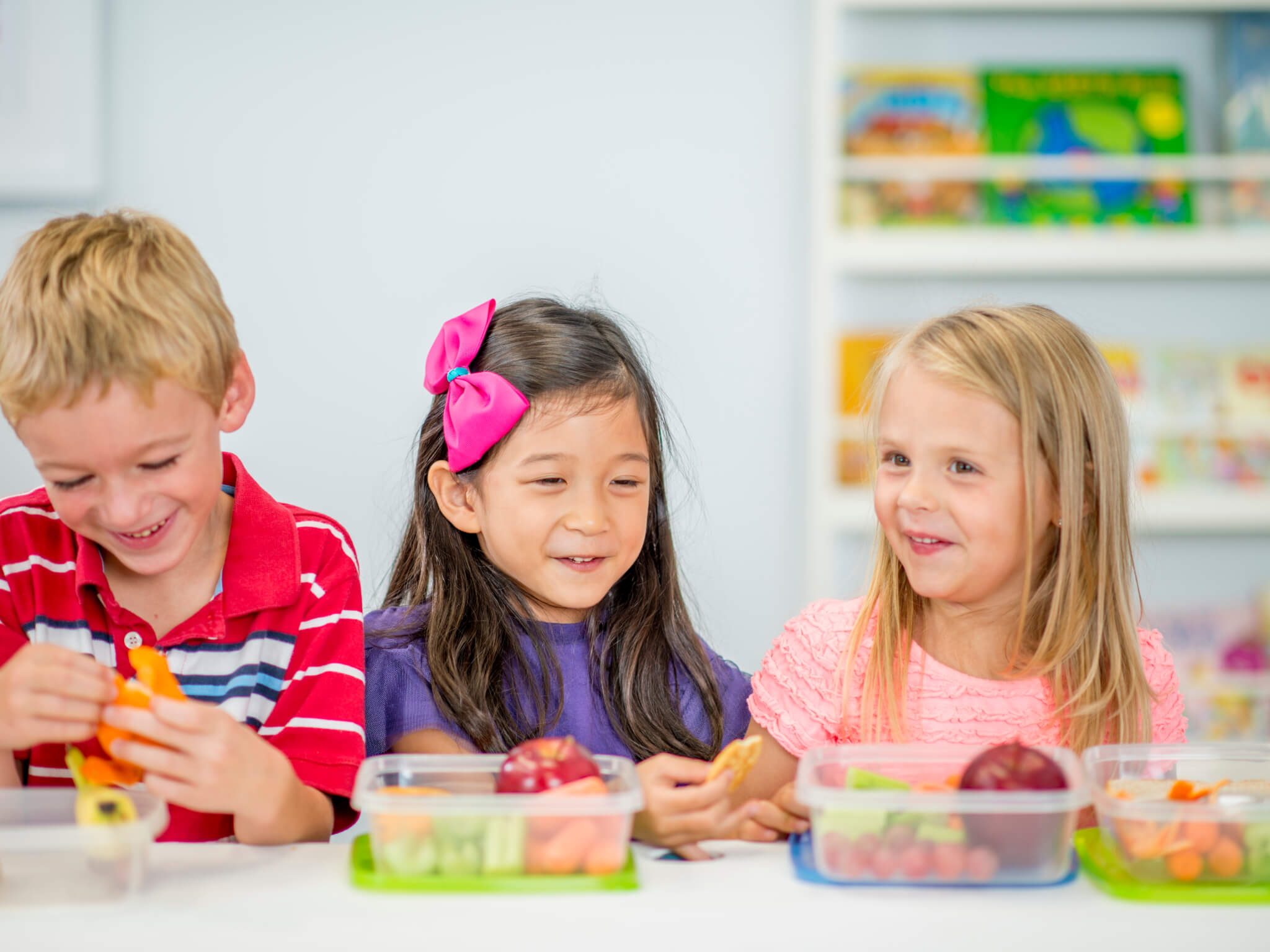
Getting kids to eat right can sometimes be a challenge. But, just as with adults, awareness and understanding of good nutrition can help kids to gain lifelong habits that support good health.
The Choose My Plate Program, developed by the United States Department of Agriculture (USDA), replaces the old familiar food pyramid and attempts to make healthy eating easy by using visual clues to help kids (and adults) understand what a healthy plate should look like. Seeing the plate provides a basic blueprint for health.
Let’s look at the recommendations:
- Vegetables are the foundation of a healthy diet and (along with fruit) should make up one-half of any meal. Keep things fun by trying new veggies—you never know what new vegetable your child will love. Many vegetables can be hidden in dishes by putting them through a food processor to mix into a sauce or main dish. Try vegetables as snacks: peanut butter and celery, edamame and hummus, or just carrots.
- Fruits are another good source of vital nutrients for children. Fruits can be a source of too much sugar if children overdo it but are almost always a good choice otherwise. As with veggies, choose a colorful variety of fruits to get all the benefits of different types of phytonutrients. Watch out for dried fruits as they are often low in fiber and high in sugar.
- Grains are healthiest when they are minimally processed. Whole grains and foods made from whole grains are the best choice. Think outside the wheat box and try brown rice, quinoa, teff, amaranth, and other grains.
- Proteins are important for muscle, brain, and even bone health. Try to avoid processed meats (bacon, deli meats, hot dogs) and focus on fish, eggs, and poultry. Don’t forget that there are many non-animal-sourced proteins such as soy and other beans, peas, nuts, and seeds that are great additions to any meal.
- Fats are as important as other nutrients for health. The challenge is to make sure children are getting healthy fats. Some fats are essential (DHA is important for kids’ brain development). Stay away from hydrogenated oils and trans fats (typically found in fast food, chips, and most processed foods).
Water is the best drink for your child. Fruit juice, which may seem like a good choice, lacks fiber to slow down the sugar it contains and is associated with increased weight in children.[i] Avoid sugary sodas as well.
Focus on the basics: Get kids to eat a variety of different colored foods that are not processed.
If you have kids who will only eat green beans, give them green beans at every meal. Most will outgrow their mono-food obsessions. And consider a multivitamin to make sure they are getting the nutrients they need.
For more healthy lifestyle tips, Subscribe Now to Naturally.
[i] Dennison BA, Rockwell HL, Baker SL. Excess fruit juice consumption by preschool-aged children is associated with short stature and obesity. Pediatrics. 1997 Jan 1;99(1):15-22.





